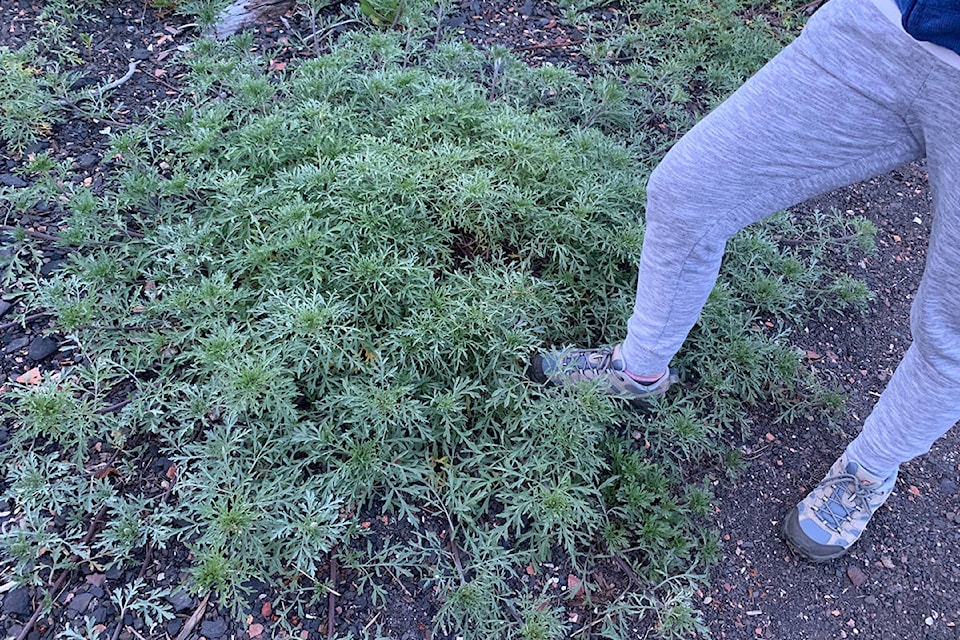By Leslie Cox
Special to The Record
An alarm has been raised by one Courtenay resident claiming there is a “devil on our doorstep.” It is a plant and this resident has declared it an “evil weed.”
No, it is not bindweed… or horsetail… or even Japanese knotweed. This evil one is actually a native plant to the west coasts of North America, Central America and South America.
Its name is Ambrosia chamissonis. You might know it by one of its common names: silver bur ragweed, silver beachweed, beach bur, Pacific silver burweed.
How can a plant be so evil with a name like ambrosia? The Merriam-Webster Dictionary states “ambrosia” means “food of the gods” as well as “scent or perfume of the gods.” Just roll the name off your tongue. You can almost taste and smell pure deliciousness.
True, its dense mat of radiating four-foot-long branches can be a tripping hazard; but so can the far-flung tentacles of Himalayan blackberry.
You also want to watch out for the seed pods on silver burweed. They have sharp points, which really hurt if you come into contact with them. But then, so do the thorns on blackberries. Ever lost your balance in reaching for one berry you know is the juiciest and tastiest in the whole patch? Trust me. No blackberry is juicy and tasty enough to make such pain and extradition agony worthwhile in its acquisition.
Admittedly, the burs are good at “jumping” in order to hitch a ride to a new growing spot. But hey, there are a lot of “evil weeds” out there which do the same thing. Call it survival. Plants will do anything to ensure the continuance of their species.
At this time of year, Sadie’s long coat gets a thorough brushing after each walk before she’s allowed into the garden.
But not all is terrible news about silver burweed. For centuries this plant has been harvested by healers for its wonderful medicinal benefits as an astringent, emollient, emetic and febrifuge (fever reducer).
Ambrosia chamissonis is also noted in the Status Report on Coastal Sand Ecosystems in BC, March 2011, as a species of great conservation significance. (This report is used as a foundation for the planning of ecosystem recovery work in B.C.) Habitat assessments determined there has been significant impact on these ecosystems over the last 100 years with numerous plant and animal species at high risk of extinction. (Google the report. It is interesting reading.)
Getting back to the alarm raised by the Courtenay resident…yes, given the tripping hazard, the thorny burs and the many seeds with which to expand its population, Pacific silver burweed could be called a nasty, invasive plant.
But it is a native plant and as explained, it has a useful purpose for existence.
Perhaps the answer is in education to learn more about this plant. There may be an animal, insect, or even a disease susceptibility that will keep silver burweed from taking over. (Remember the fungal disease which kills forest tent caterpillars when there is an outbreak?) Nature has an incredible way of maintaining its own balance… if we just let it happen.
In the meantime, maybe we should just watch where we walk to avoid getting near any silver burweed plants as we stroll our local shorelines. It may be better the plants remain to do their part in ensuring the integrity of our sandy shores given the number of visitors who flock to the beaches.
On another note… sure wish I could infuse these words with the scent emanating from the honeysuckle on our tool shed right now. Definitely heaven-sent ambrosia for the senses!
Leslie Cox co-owns Growing Concern Cottage Garden in Black Creek. Her website is at www.duchessofdirt.ca
